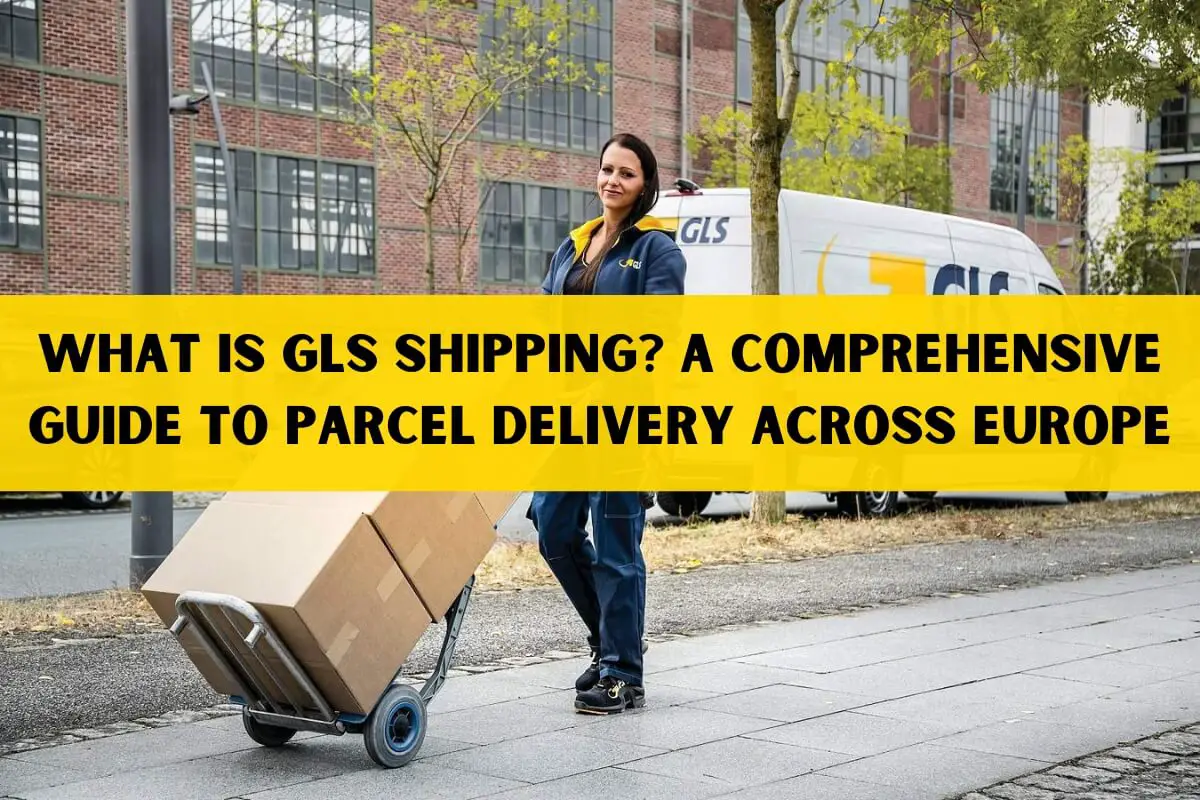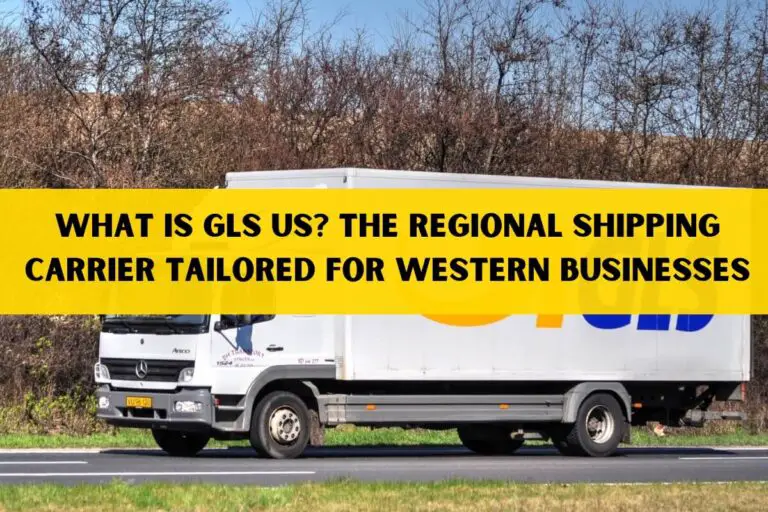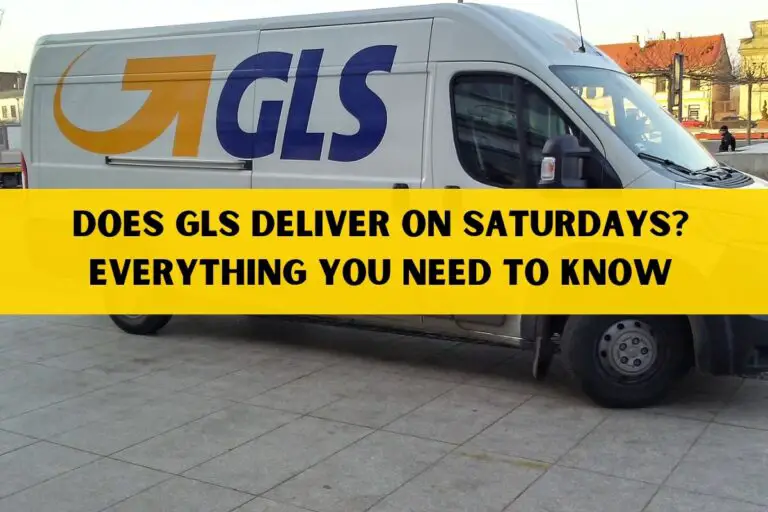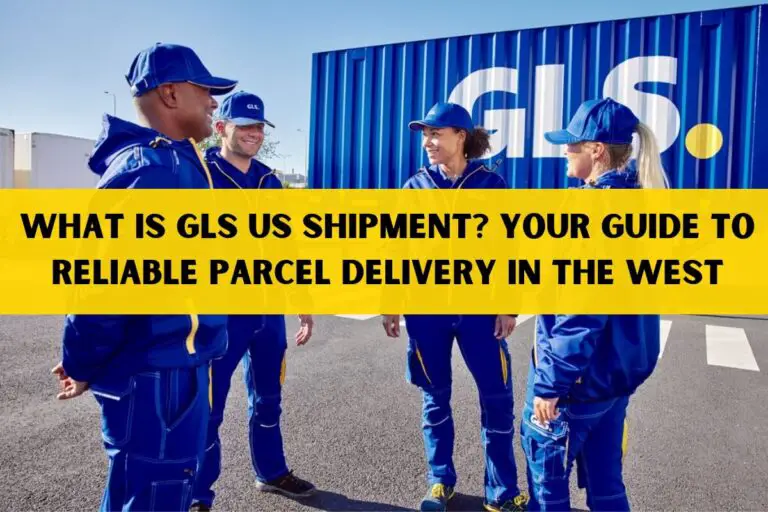What is GLS Shipping? A Comprehensive Guide to Parcel Delivery Across Europe

Shipping parcels across international borders can be a daunting task, especially when dealing with the complexities of customs, regulations, and logistics networks in different countries. However, for individuals and businesses operating within Europe, GLS shipping offers a reliable and efficient solution for all their parcel delivery needs.
So, what is GLS shipping? GLS shipping refers to the courier and parcel delivery services provided by General Logistics Systems (GLS), a leading logistics company specializing in European operations.
In this comprehensive guide, we’ll cover everything you need to know about GLS shipping, including the company’s background, services offered, shipping process, benefits, pricing, and how to use their services effectively. We’ll also compare GLS to other major courier companies to help you make an informed decision.
What is GLS?
GLS, or General Logistics Systems B.V., is a logistics company based in Amsterdam, the Netherlands. Though British-owned, GLS has established itself as a major player in the European parcel delivery market, serving over 40 countries across the continent.
Originally founded in 1989 as German Parcel, GLS has been a subsidiary of Royal Mail Group since 1999. This strategic partnership has enabled GLS to leverage Royal Mail’s extensive network and resources, further enhancing its capabilities.
With over 120 national and regional hubs and more than 1,600 depots across Europe, GLS has built a robust infrastructure to facilitate quick and efficient parcel delivery. In fact, between 2021 and 2022, GLS couriers successfully delivered an impressive 870 million parcels throughout the region.
GLS Shipping Services
GLS offers a range of shipping services designed to cater to different parcel types and delivery requirements. Here are their main offerings:
1. GLS Euro Business Parcel
This service is ideal for larger packages, offering door-to-door delivery across Europe during business hours. The GLS Euro Business Parcel can accommodate packages weighing up to 30 kg and with a combined length and girth of 300 cm.
2. GLS Euro Business Small Parcel
As the name suggests, this service is tailored for smaller and more sensitive packages that require extra care during transit. GLS Euro Business Small Parcel is designed for packages weighing up to 3 kg and within specific size dimensions.
These packages are sorted separately from larger ones and transported in special bags, ensuring increased transport security and minimizing the risk of damage.
3. Express Delivery
For time-sensitive shipments, GLS also offers an express delivery service. Depending on the destination, express deliveries can be completed within 3-4 days, both for domestic and international shipments.
4. Next-Day Delivery
If you need your parcel delivered even faster, GLS provides a next-day delivery option. As the name implies, this service ensures that your package reaches its destination within 24 hours, or sometimes even on the same day, depending on the location.
5. Standard Delivery
For less urgent shipments, GLS offers a standard delivery service. While the transit times may be longer than express or next-day options, this service is often more cost-effective, especially for non-time-sensitive parcels.
How Does GLS Shipping Work?
GLS shipping follows a streamlined process to ensure efficient and reliable parcel delivery across Europe. Here’s how it works:
- Booking and Collection: You can book a GLS collection or delivery online through their website or via third-party courier brokers like Parcel2Go. Alternatively, you can schedule a pickup directly from your location by contacting GLS.
- Packaging and Labeling: Properly packaging your items according to GLS guidelines is crucial. GLS provides specific instructions on how to pack different types of items safely for transit. Once packed, you’ll need to print and attach the GLS shipping labels to your parcels.
- Pickup or Drop-off: Depending on your preference, you can either hand over your parcels to a GLS courier during the scheduled pickup or drop them off at a GLS depot nearest to you.
- Sorting and Transportation: GLS sorts and routes your parcels through its network of hubs and depots, ensuring efficient transportation to the destination country or region.
- Delivery Attempts: Upon arrival at the destination, GLS couriers will attempt to deliver your parcel to the specified address. If the recipient is not available, GLS will typically make a second delivery attempt or leave a notification for the recipient to collect the parcel from a nearby GLS ParcelShop.
- Tracking and Signature: Throughout the shipping process, you can track your parcel’s progress online using the GLS tracking system. Upon successful delivery, GLS will obtain a digital recipient signature as proof of delivery.
GLS Tracking System
One of the standout features of GLS shipping is its advanced tracking system, which provides customers with real-time visibility into the entire delivery process.
Here’s how the GLS tracking system works:
- Each parcel is assigned a unique 2D barcode label.
- At every touchpoint during the delivery process, GLS couriers and staff scan the barcode using handheld scanners.
- The scanned information is instantly transmitted to GLS’s sophisticated software system, updating the parcel’s status and location.
With the GLS tracking system, customers can access detailed information about their shipment, including:
- Shipment origin and destination
- Estimated delivery date and time
- A timeline of each distribution touchpoint
- Current delivery status (in transit, out for delivery, delivered, etc.)
- Delivery or attempted delivery timestamps
This level of transparency not only provides peace of mind but also helps prevent misplaced packages and identifies where any potential issues may have occurred during transit.
Benefits of Using GLS for Shipping
There are several compelling reasons why individuals and businesses choose GLS for their parcel delivery needs across Europe:
- Reliability and Efficiency: With decades of experience and a well-established network, GLS has built a reputation for reliable and efficient parcel delivery services throughout Europe.
- Increased Transport Security: GLS takes extra precautions to ensure the safe transport of sensitive or fragile items through their GLS Euro Business Small Parcel service, utilizing specialized packaging and handling procedures.
- Liability Coverage: In the unlikely event that a parcel is lost or damaged during transit, GLS provides liability coverage up to the value of the goods, ensuring that customers receive appropriate compensation.
- Digital Recipient Signatures: GLS obtains digital signatures upon delivery, providing customers with proof of successful delivery and eliminating any potential disputes.
- Optional Delivery Services: GLS offers additional services like cash on delivery and exchange deliveries, allowing customers to customize their shipping experience according to their specific needs.
- Partnerships with Postal Services: GLS’s partnership with Royal Mail enables seamless and efficient deliveries within the UK, leveraging the postal service’s extensive network.
- Customer Service: GLS is known for its commitment to excellent customer service, providing support and assistance throughout the shipping process.
How to Ship with GLS?
Shipping with GLS is a straightforward process, whether you’re an individual or a business. Here are the general steps to follow:
- Book a Collection or Delivery: Visit the GLS website or use a courier broker like Parcel2Go to book a GLS collection or delivery. Provide the necessary details, such as the pickup and delivery addresses, parcel dimensions, and weight.
- Package Your Items: Follow GLS’s packaging guidelines to ensure your items are properly protected during transit. Use appropriate packaging materials and clearly label your parcels.
- Print and Attach Shipping Labels: Once your booking is confirmed, print the GLS shipping labels and securely attach them to your parcels.
- Schedule Pickup or Drop-off: Depending on your preference, you can either schedule a pickup with a GLS courier or drop off your parcels at a nearby GLS depot.
- Track Your Shipment: Use the GLS tracking system to monitor the progress of your parcel throughout the delivery process.
GLS Services for Businesses
GLS recognizes the unique shipping needs of businesses, particularly those operating in the e-commerce space. To cater to these requirements, GLS offers dedicated services and tools:
- Packlink PRO Platform: Packlink PRO is a comprehensive platform designed to streamline order management and shipping processes for e-commerce businesses. It allows you to easily book GLS deliveries, track parcels, and manage your entire shipping operations from a single dashboard.
- Account Managers: When you sign up for Packlink PRO, GLS assigns a dedicated account manager to assist you. Your account manager will help you find the best rates, optimize shipping strategies, and ensure a seamless experience with GLS.
- Customized Solutions: GLS works closely with businesses to understand their specific shipping needs and provide tailored solutions, such as bulk discounts, customized packaging, and integrated shipping systems.
By offering customized solutions, GLS aims to provide businesses with a shipping experience that aligns perfectly with their operational requirements and goals. This level of personalization ensures that businesses can optimize their shipping processes, reduce costs, and maintain a competitive edge in their respective industries.
GLS Shipping Rates and Costs
The cost of shipping with GLS depends on various factors, including the service type (Express, Next-Day, Standard), destination country, package weight, and dimensions. Generally, GLS offers competitive rates compared to other major couriers operating in the European market.
To obtain accurate shipping rates for your specific needs, you can use online shipping calculators provided by GLS or third-party courier brokers like Parcel2Go. These tools allow you to input your parcel details and instantly view the applicable GLS shipping rates, enabling you to make informed decisions.
Businesses that frequently ship with GLS may get discounted rates or volume-based pricing plans. A dedicated GLS account manager can help businesses find cost-effective shipping solutions.
Comparing GLS to Other Couriers
While GLS is a prominent player in the European parcel delivery market, it’s essential to compare their services and rates with other major couriers to ensure you’re making the best choice for your specific needs. Here’s a brief comparison of GLS with some of its competitors:
- DHL: As a global logistics giant, DHL offers extensive international reach and a wide range of shipping services. However, their rates can be higher than GLS for certain routes and shipment types within Europe.
- UPS: UPS is another well-known courier with a strong presence in Europe. While they offer reliable services, their rates may be more expensive than GLS, especially for smaller businesses and individuals.
- FedEx: FedEx is renowned for its express delivery services and global network. However, for parcel deliveries within Europe, GLS may offer more competitive rates, especially for non-expedited shipments.
- National Postal Services: Many countries have their national postal services, which can be more cost-effective for domestic shipments but may be less efficient for cross-border deliveries within Europe.
When choosing a courier service, it’s essential to consider factors such as delivery times, service reliability, tracking capabilities, and customer support, in addition to shipping rates. By carefully evaluating your specific needs and comparing different options, you can determine whether GLS shipping is the most suitable choice for your parcel delivery requirements within Europe.




